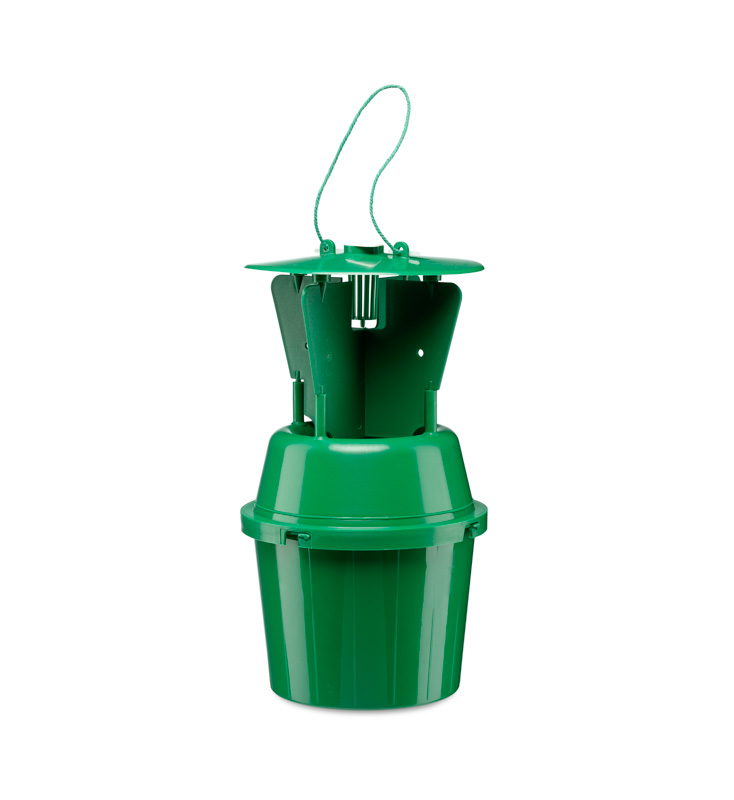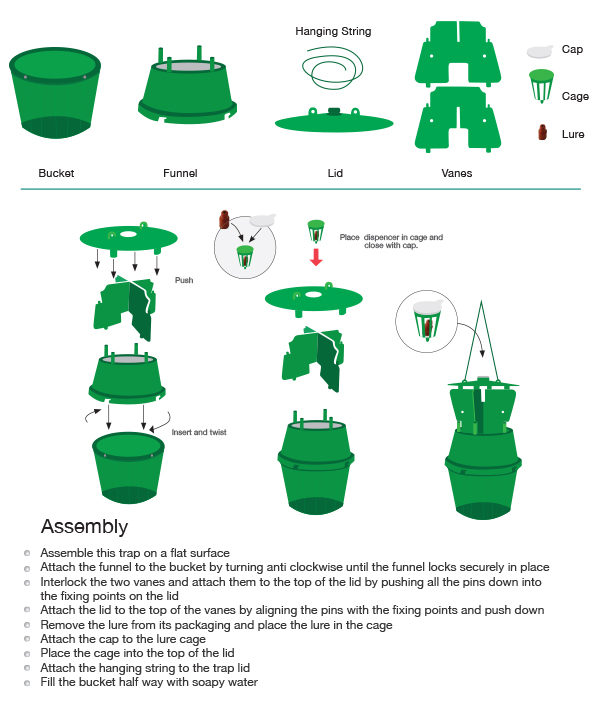Green Vane Trap
Simple to use trap for monitoring and containment of the strawberry blossom weevil, Anthonumus rubi and the tarnished plant bug, Lygus rugulipenis.
The Green Vane Trap has been developed to be highly effective at trapping the strawberry blossom weevil and tarnished plant bug. The trap is designed for use with pheromone lures for monitoring and mass trapping. The traps are hardwearing and can be used for several seasons.
Benefits of the Green Vane Trap
- Durable and hardwearing
- Simple to install and maintain
- Attracts both Anthonomus rubi and Lygus rugulipennis
- Target pests fly into the cross vane at the top of the trap and fall into the funnel and bucket below.



